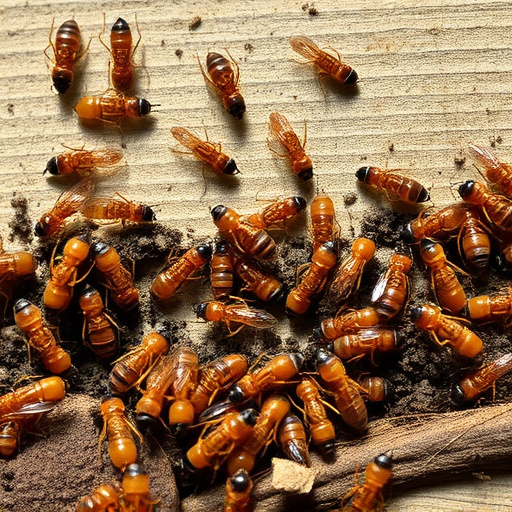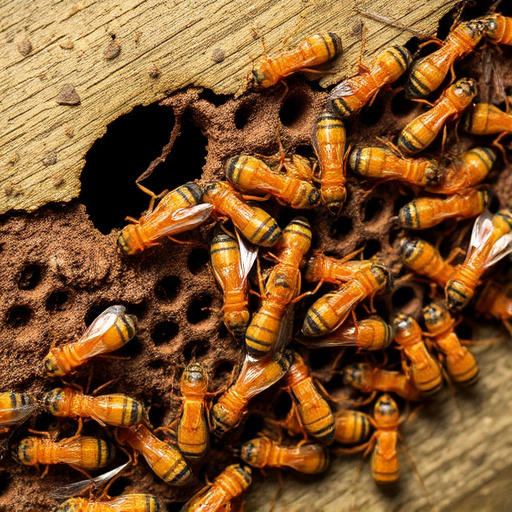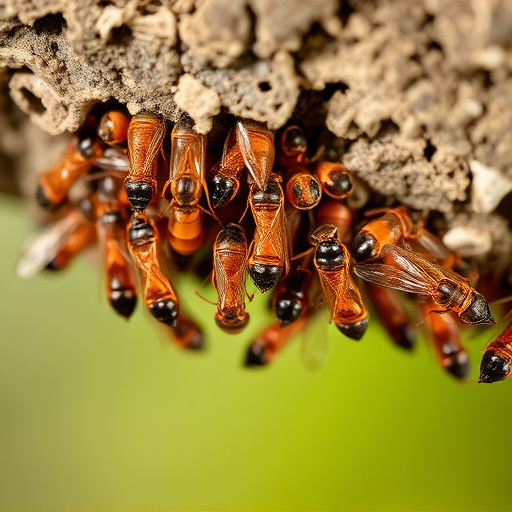In the Catalina Foothills region near Tucson, Arizona, understanding how climate and termite behavior intertwine is key to effective pest prevention. Termites thrive in moist environments due to local rainfall and vegetation, with species like the Western Subterranean termite being particularly problematic. The region's warm summers and occasional monsoons create ideal breeding conditions, making termite control Tucson a priority for homeowners. Professional services leverage knowledge of swarming seasons, tailored preventive measures like inspections, sealing entry points, baits, and eco-friendly solutions to safeguard homes from significant termite damage.
In the warm, arid climate of Catalina Foothills, Arizona, understanding how weather patterns influence termite behavior is key to effective pest prevention. This region’s unique environmental conditions significantly impact termite populations and activities. This article explores the intricate relationship between climate and termites, offering insights into specific prevention strategies tailored for Tucson’s ecosystem. From recognizing seasonal trends to implementing robust measures, we guide homeowners on termite control, emphasizing the importance of proactive approach to protect their properties with effective termite control Tucson solutions.
- Understanding Termite Behavior in the Catalina Foothills Region
- Impact of Climate Conditions on Termite Population and Activity
- Effective Termite Prevention Strategies Specific to Tucson's Climate
- Exploring Professional Termite Control Options for Arizona Homes
Understanding Termite Behavior in the Catalina Foothills Region

In the Catalina Foothills region, understanding termite behavior is key to effective prevention strategies. Termites are highly social insects that live in colonies, with each colony consisting of workers, soldiers, and a king and queen. The species prevalent in this area, such as the Western Subterranean Termite, prefer moist environments, making the abundant rainfall and lush vegetation of Catalina Foothills ideal for their survival. These termites feed on cellulose-rich materials, commonly found in wooden structures, which makes homes built in this region particularly vulnerable.
Termite control Tucson requires a deep understanding of local behaviors. During their swarming season, typically in spring and summer, males and females leave the colony to mate. This is when they are most visible and vulnerable. Local termite control professionals in Catalina Foothills leverage this knowledge by implementing preventive measures tailored to the region’s specific needs, including regular inspections, sealing entry points, and using baits to disrupt and eliminate colonies before they cause significant damage to homes.
Impact of Climate Conditions on Termite Population and Activity

In the Catalina Foothills region, climate plays a pivotal role in shaping termite populations and their activity levels. The area’s unique environmental conditions directly influence the behavior and proliferation of these wood-eating insects, making termite control in Tucson a complex endeavor. Warmer temperatures and increased humidity, hallmarks of the desert climate, create ideal breeding grounds for termites, leading to more active colonies and higher population densities.
Additionally, the varying rainfall patterns impact termite movement and feeding habits. During wetter seasons, termites become more mobile, expanding their foraging areas and increasing the potential for interactions with human structures. This dynamic relationship between climate and termite behavior necessitates tailored termite control strategies in Tucson that consider these environmental factors to effectively mitigate pest issues for area residents.
Effective Termite Prevention Strategies Specific to Tucson's Climate

In the Catalina Foothills region of Tucson, Arizona, unique climatic conditions present specific challenges for termite prevention. The area’s warm and dry summers, coupled with occasional monsoons, create an ideal environment for termites, making effective termite control Tucson a priority for homeowners. To combat this, several tailored strategies can be employed to safeguard properties against these persistent pests. One key approach is to maintain proper drainage around the house, eliminating standing water that attracts termites. Regular inspection and early detection are also vital; scheduling professional assessments periodically allows for the identification of potential entry points before they become established colonies.
Additionally, sealing gaps in foundations, walls, and doors helps prevent these insects from finding their way indoors. Using termite-resistant materials during construction or retrofits can further deter termites. Termite baits and traps are other effective tools; these systems detect and eliminate termites without the need for chemical treatments, making them a safer and more eco-friendly option. By combining these strategies, Tucson residents can effectively manage and mitigate termite infestations specific to their climate.
Exploring Professional Termite Control Options for Arizona Homes

In the Catalina Foothills region of Arizona, understanding how climate influences termite prevention is key to safeguarding your home. Termites thrive in warm, moist environments, and Tucson’s unique climate presents both challenges and opportunities for effective termite control. Professional services in termite control Tucson offer specialized solutions tailored to this specific ecosystem.
Local experts employ advanced methods to mitigate termite infestations, leveraging insights into local species’ behaviors and habitat preferences. Treatments may include targeted applications of eco-friendly pesticides, physical barriers, or bait systems designed to disrupt termite colonies without harming other wildlife. With climate change introducing new variables, these professional interventions become even more crucial for maintaining the integrity of homes in this scenic yet termite-prone area.
In the Catalina Foothills region, understanding how climate conditions impact termite populations is crucial for effective termite prevention. The unique ecosystem and weather patterns play a significant role in shaping termite behavior, making Tucson’s climate both a challenge and an opportunity for homeowners seeking termite control. By implementing specific strategies tailored to this environment, such as regular inspections, moisture management, and professional treatments when needed, residents can safeguard their homes against these persistent pests. When it comes to termite control Tucson, a proactive approach that considers the local climate is key to ensuring long-term protection.
